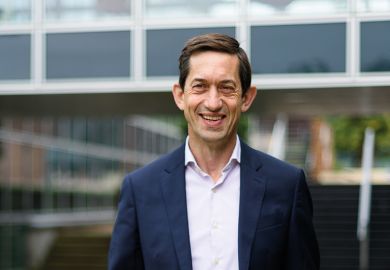In recent years, many leading universities around the world have reached out to undertake institutional collaborations and set up branch campuses. The Middle East and East Asia have been among the most popular destinations for these branches, which are designed to create regional bases, drive the cross-border flow of students and boost parent institutions’ global reputations.
However, the appetite for this flavour of internationalisation is clearly cooling. As reported in Times Higher Education last month, evidence from a survey of internationalisation staff working in Europe, conducted by the European Association for International Education, showed that opening such campuses is now their lowest priority. The focus is shifting towards student/academic mobility and establishing partnerships between global players.
The University of California, Berkeley is the latest institution to confirm this emerging pattern. Its new “global campus” will be built just a few miles north of its main site in the US, in the expectation that the world will come to California.
Five universities from Europe, North America and Asia have already expressed an interest in developing a permanent presence at the campus and the list of partners is expected to be finalised within the next year.
Joint research institutes will be set up, offering collaborative degrees and focusing on universal challenges, while at the heart of the campus will sit a global college for advanced study, designed to provide future world leaders with a firm foundation in issues such as democracy, trade and environment. Ultimately the site could accommodate around 10,000 students, with the campus supported by partnerships with some of California’s leading high-tech businesses.
Nicholas Dirks, Berkeley’s chancellor, told THE that California’s status as a “global melting pot” and its booming start-up culture had put the university in a privileged position to attract talent from around the world.
“A lot of people want to come: increasingly they want to come not just because they like the weather or because they like the city, but because they want to have some access both to the start-up culture and potentially to the capital that has also migrated there,” Professor Dirks said.
But the chancellor acknowledged that the decision to locate the global campus in California was also informed by the recognition of the pitfalls facing leading US institutions operating overseas. For example, New York University has faced criticism over the treatment of workers who built its campus in Abu Dhabi, while questions of academic and political freedom have haunted other institutions operating in Asia.
Professor Dirks said that while he had “envied the brio” of the initial burst of branch campus expansion, he had been able to learn from it.
“I realised I was really on to something when I was having a conversation with a university president in China who, without my saying anything, volunteered that…it would be a great benefit for his faculty and students to have the opportunity to spend some time on a campus where they didn’t have to worry about questions relating to what they could say and what the political implications were,” he said.
California screaming
More local concerns are another key driver behind Berkeley’s approach, and these extend beyond a lack of space on the existing campus.
Over the past few years, the University of California system has suffered a series of budget cuts that carried the threat of repeated tuition fee rises, until a recent boost in tax revenue for the state offered hope for financial reinforcement.
But the reduction in state funding for Berkeley – the UC system’s highest-ranked campus in the Times Higher Education World University Rankings – has counter-intuitively been accompanied by attempts to increase political control over the institution, Professor Dirks said. This was “at best distracting” from the institution’s core academic mission, he added.
The chancellor characterised rows over executive pay, academic workload and graduation rates as “astonishing” compared with his previous experience at Columbia University, a private institution.
The branch campus’ financial model will differ from the parent institution’s, focusing on philanthropy, bonds and tuition fees, plus rental income from partner universities. Professor Dirks said this offered an opportunity for Berkeley to internationalise beyond the state’s control.
“Many of the things that people howl about in [California state capital] Sacramento are based upon misinformation and short-term political interest,” he said. “So, inasmuch as we have been effectively privatised by the state of California, this is an opportunity to develop a space in which we will develop different financial models and create a different set of global relationships that the state of California really would not, under any circumstances, be well equipped to manage or to sponsor.”
He added: “Now that the state is unwilling to support higher education, particularly high-level elite status higher education, we really do need different financial models.”
Experimental risks and rewards
Professor Dirks conceded that the think global, stay local approach is not without risk: it remains to be seen how much of the Berkeley experience can be offered on the new campus, and efforts will have to be made to ensure that the benefits of increased internationalisation flow back to the parent site.
However, he added that the campuses’ close proximity should minimise any divide and argued that the new space could help to build relationships between researchers who might not have crossed paths before. Nevertheless, the model will be “open enough to do more than simply tweak it as we go along”.
“My sense is that we will experiment with this over time,” Professor Dirks said.
POSTSCRIPT:
Article originally published as: Home is where the branch is (11 June 2015)
Register to continue
Why register?
- Registration is free and only takes a moment
- Once registered, you can read 3 articles a month
- Sign up for our newsletter
Subscribe
Or subscribe for unlimited access to:
- Unlimited access to news, views, insights & reviews
- Digital editions
- Digital access to THE’s university and college rankings analysis
Already registered or a current subscriber? Login




